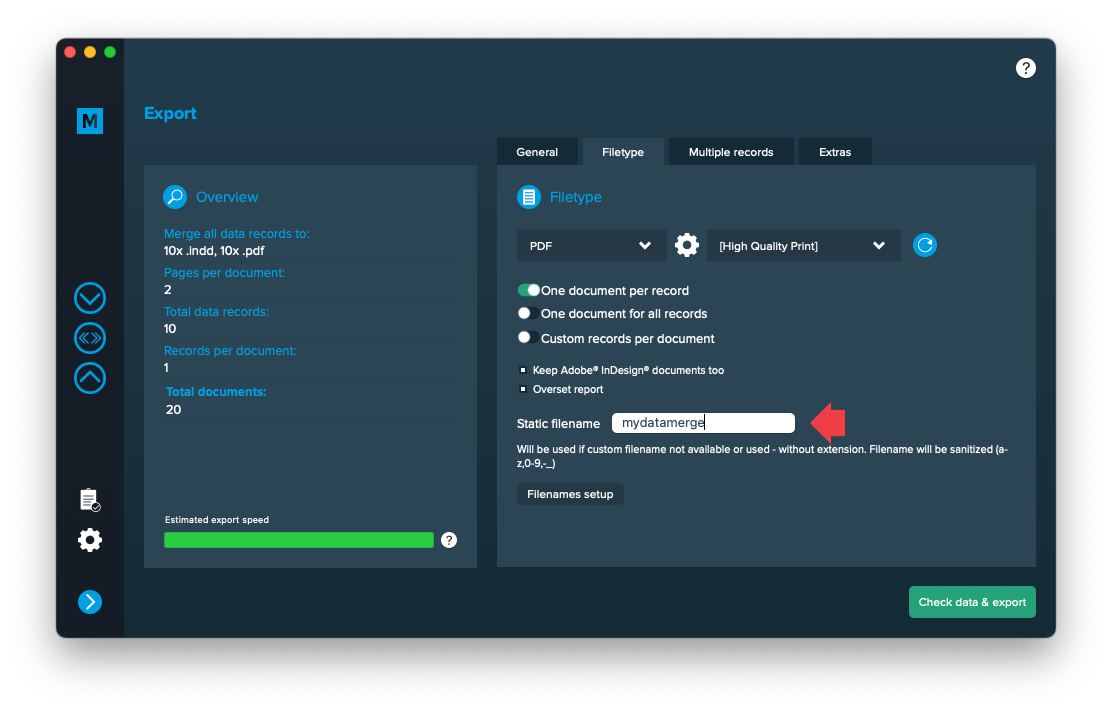1 MyDataMerge configuration
Configurations
What are setups and why do i need them?
Once you open a placeholders editor you will see that you can select a replacement type to show MyDataMerge what kind of data you want to inject [1] to that placeholder and you can select a setup [2]. Initially there’s a setup called “Initial setup” you can work with. But you can add as many others as you like.
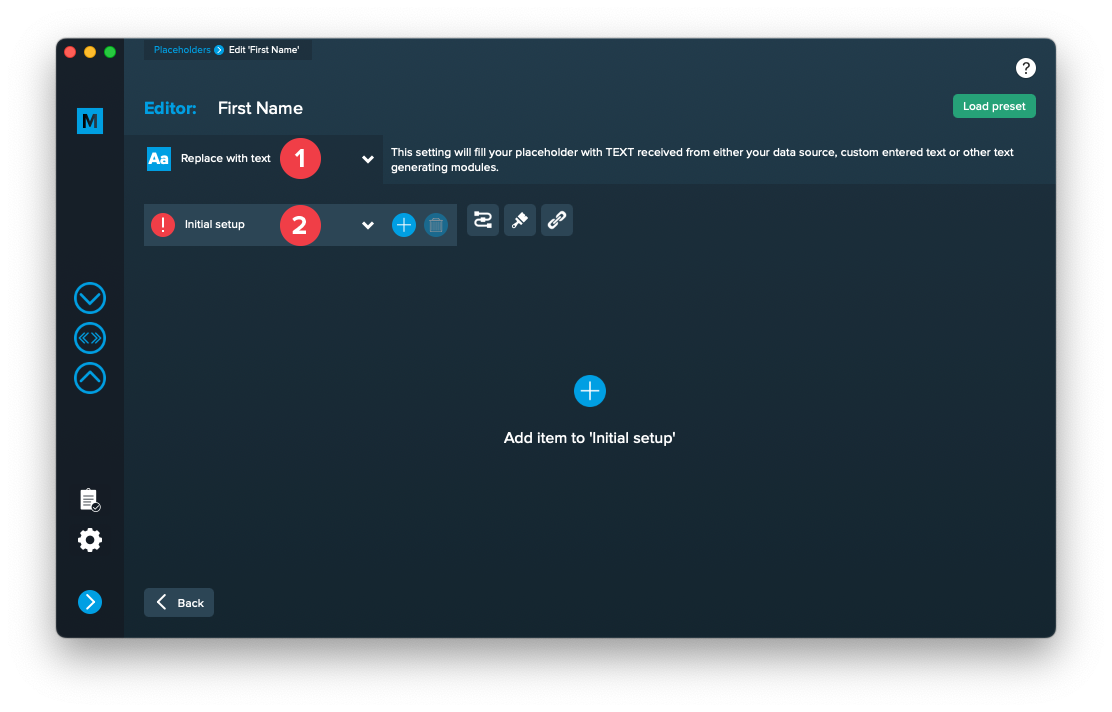
In the center area (“Add item to ‘Initial setup'”) you can configure the output to be injected in the merge process dynamically. Each setup can have custom style settings (brush icon) and a custom hyperlink setting (chain icon).
By default, only the selected setup is used for the merge process. But setups become really powerful once you add them in a row (if first fails use second then third …) (path icon) or use them based on conditions (“If ‘First Name’ is ‘John’ then use this, otherwise use that).
Add multiple setups
For every placeholder you can add more than one setup.
If you have a well formed database with no missing data, usually one setup is enough. More than one setup will come in handy in situations where this isn’t the case or where you want to apply different styles.
Example:
You have a subject line in a letter where you want to output a salutation and last name e.g. “Dear Forrest” where “Forrest” is the first name and comes from the database and “Dear” is a static text. You can do this easily with a simple setup of your placeholder:
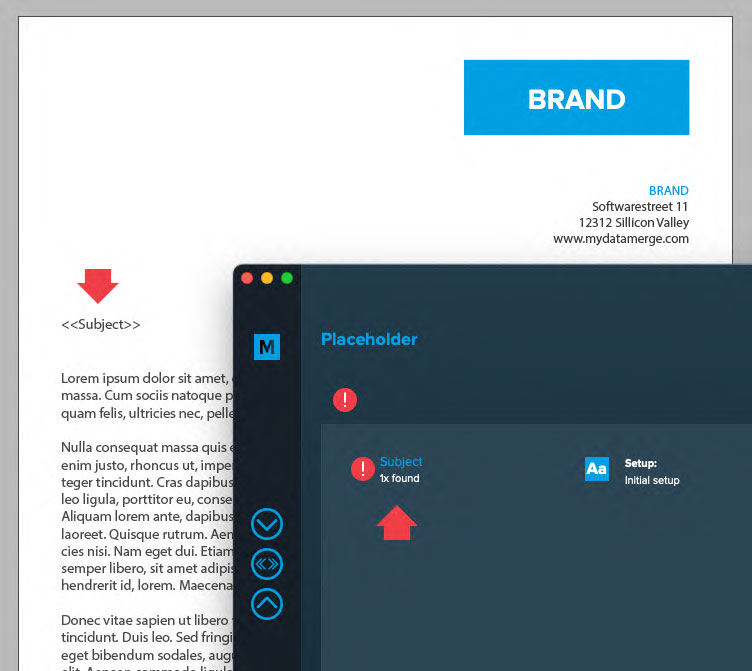
In the below image you can see the setup to output “Dear [First Name]”, a static text for “Dear ” [1] and a dynamic datasource element for the first name [2]. The output can be checked in the preview [3]: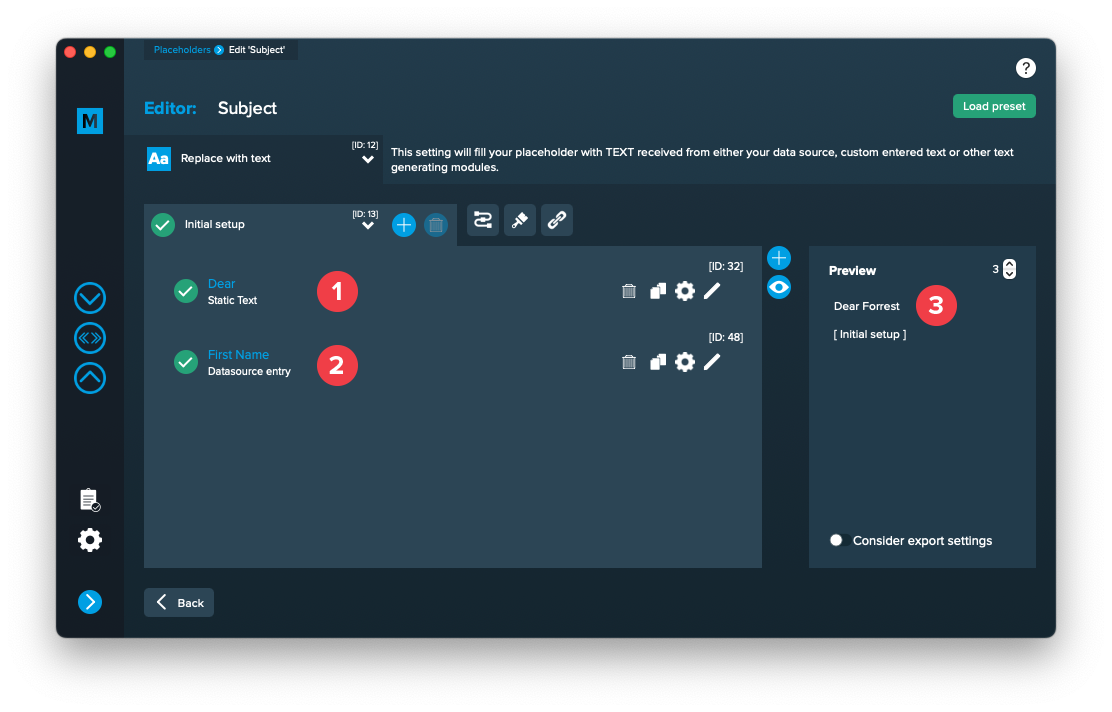
Now imagine you don’t have a first name, then you’d like to output “To whom it may concern” which you can do with a second setup. So we add another setup here and give it an appropriate name [1]:

Then we configure it to output the static text “To whom it may concern”.
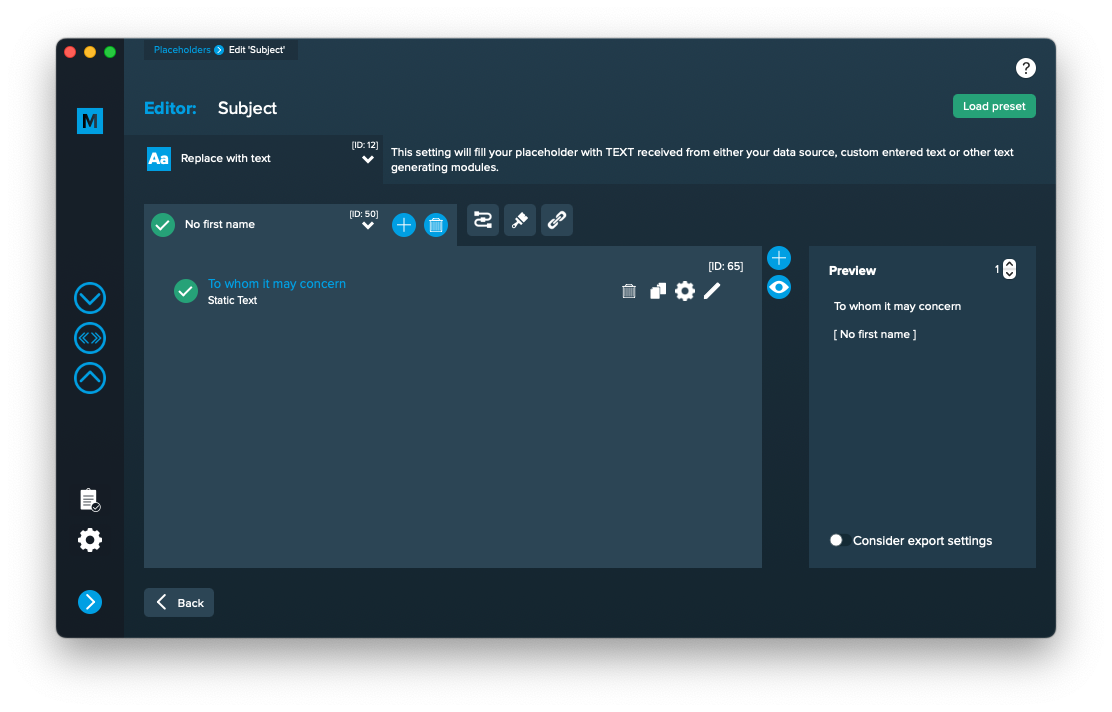
Right now, MyDataMerge would output “To whom it may concern” for every data record, because it’s the currently selected setup. To allow multiple setups to be processed you need to enable the process chain [1 + 2] as shown in the image below. Then all setups in the right table [3] will be processed from top down. If first setup fails (e.g. because first name is missing) then use second one and so on.
You can move unused setups to the left table, they will have no effect there. If the last setup in the right table fails, the “Action if last setup fails” will be executed which you can select at the bottom.
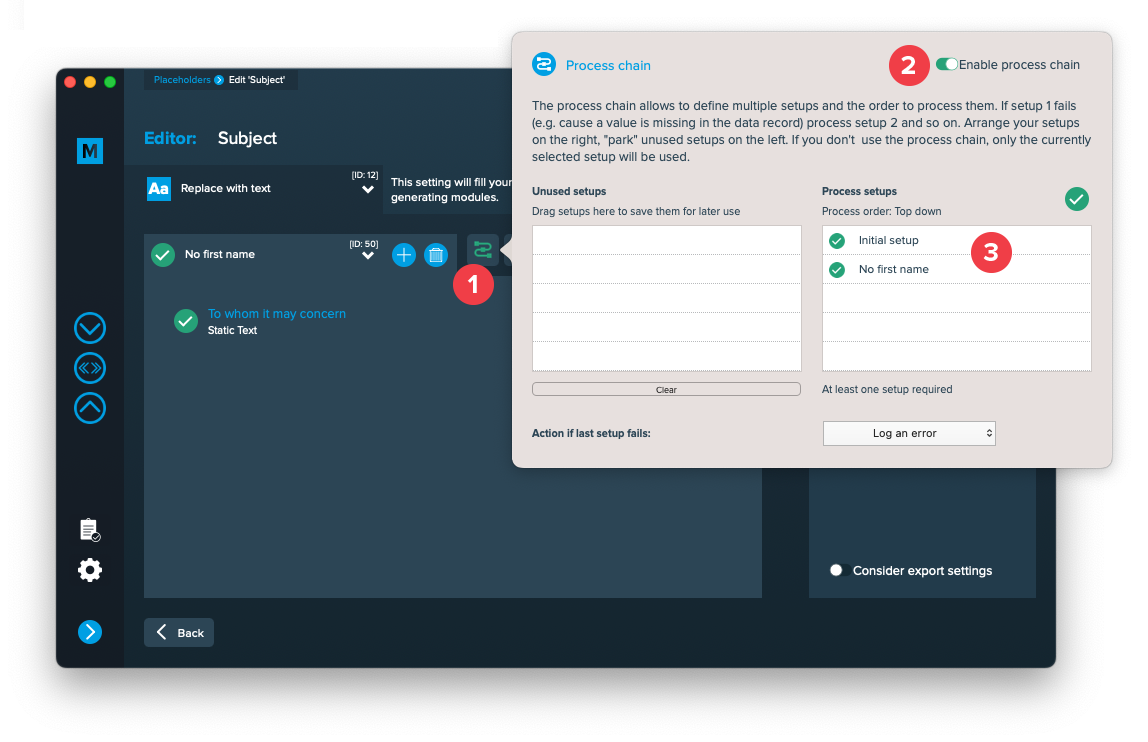
Note: You can add more control by adding conditions (on when it should be executed) to each setup.
Add conditions to setups
While the default behaviour will toggle each setup in the process chain in a row (first fails, use second, second fails, use third …), conditions will trigger a setup if conditions are met. To enable conditions you have to enable process chain first [1]. Then the conditions icon becomes visible ![]() [2]. Enable conditions and add the conditions you require for the selected setup [3] to get triggered.
[2]. Enable conditions and add the conditions you require for the selected setup [3] to get triggered.
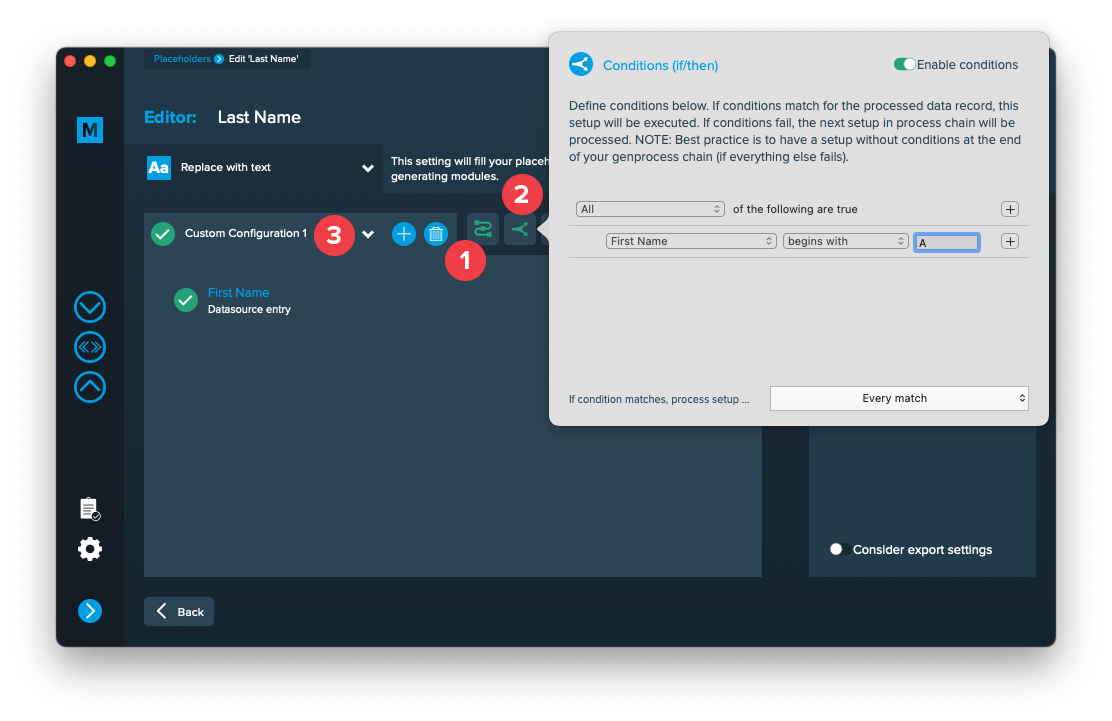
Once you have conditions enabled you will see which setup has conditions in the process chain.
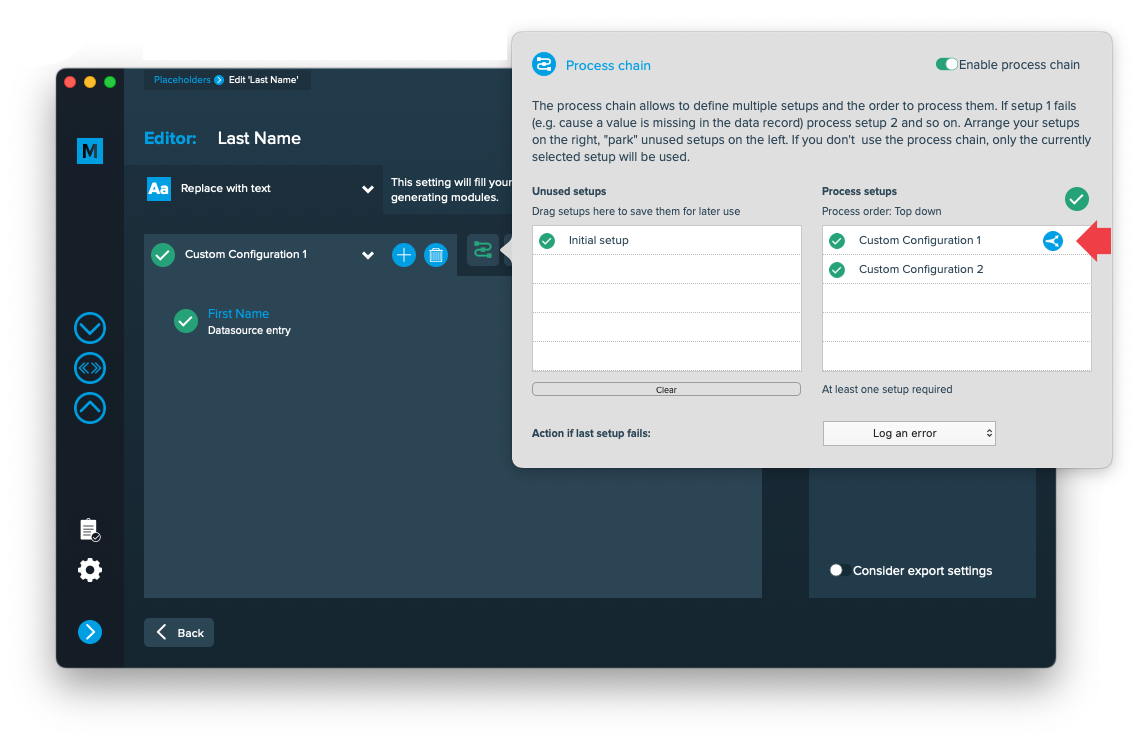
Please note that even if you add conditions to a setup they still will be processed in the order they are arranged in the process chain.
According to the above image this would be:
- “Custom configuration 1” -> Conditions met for the current data record? YES -> Execute it. NO -> Continue with the next.
- “Custom configuration 2” -> Directly executed because no conditions are set. Does it fail? -> Continue with “Action if last setup fails”.
It is always a good idea to have a setup with no condition as last one.
2 Export
Filetypes
Export to PDF files
If you want to export to PDF files go to export > filetype and select the preferred filetype from the dropdown [1]. Note that you have to select a PDF preset [2]. They are directly imported form Adobe InDesign and can be updated with the circled arrow icon.
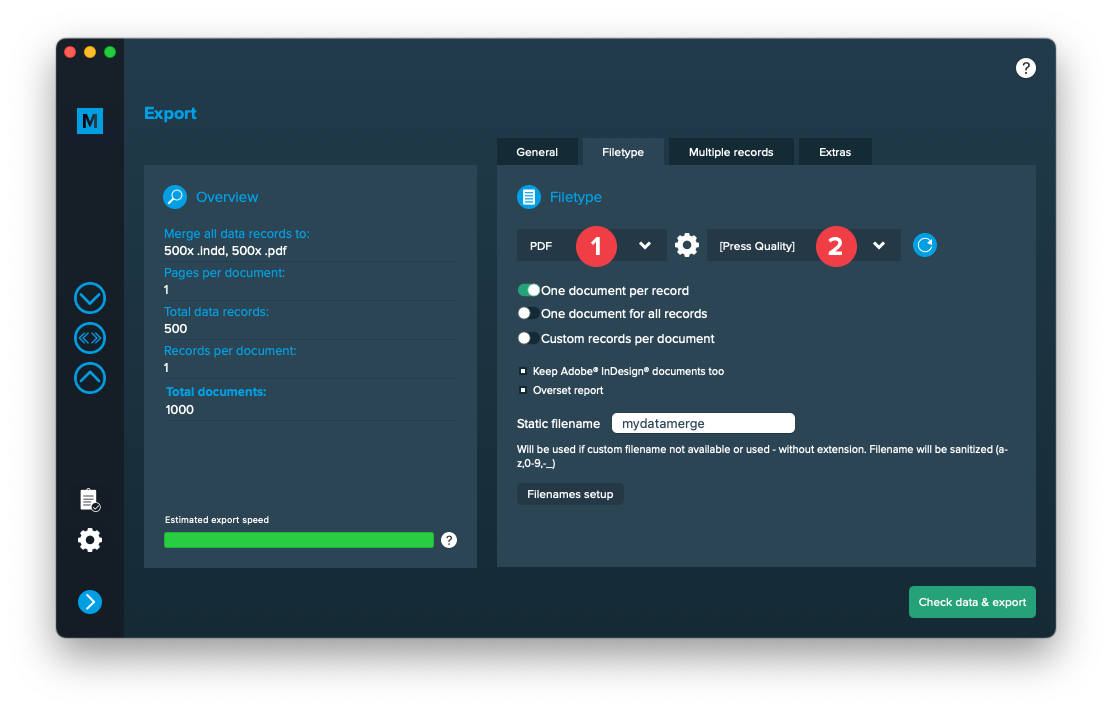
Use a static filename with counting number
You can set a static filename in Export > Filetype > “Static filename” field.
With static filenames, every file will get the same name and a counting number will be attached. For example if you define static filename to be “mydatamerge” then files will be named like this:
- mydatamerge_1
- mydatamerge_2
- mydatamerge_3
- and so on
Please note that static filenames only allow a-z, 0-9, – and _ characters. Other characters will be removed or replaced.
